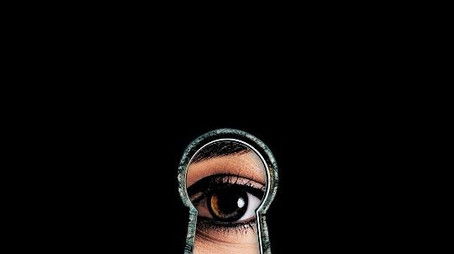
Ask Your Own Question
What is the plot?
The film "Passengers" (2008) opens on a hauntingly quiet beach strewn with the wreckage of a plane crash. Eric Clark (Patrick Wilson) wanders the shoreline, his expression one of eerie calm and almost euphoric detachment amidst the devastation. He is one of only five survivors: alongside him are Shannon, Janice, Dean, and Norman. The rest of the passengers and crew have perished in the crash, but the cause remains shrouded in mystery.
Claire Summers (Anne Hathaway), a young psychotherapist, is assigned by her mentor Perry (Andre Braugher) to counsel this small group of survivors. She meets the five: Dean, Norman, Shannon, Janice, and Eric. Each survivor carries their own trauma and conflicting memories of the crash. Dean insists there was an explosion before the crash, while others disagree or cannot recall. Janice, the flight attendant, is too traumatized to speak. Claire's sessions with the group are fraught with tension and confusion, but Eric stands apart. Unlike the others, he is strangely upbeat, almost euphoric, and requests private sessions with Claire, bypassing the group setting.
From their first one-on-one meeting, Eric's charm is palpable, and he quickly develops a personal interest in Claire. He knows intimate details about her life--her strained relationship with her sister Emma--which unsettles Claire. She wonders how he could know such things. Despite her professional boundaries, Claire finds herself drawn to Eric's enigmatic presence. Their sessions shift from clinical to personal, culminating in moments of tenderness and physical intimacy, a crossing of lines that Claire both resists and succumbs to.
Meanwhile, the other survivors begin to vanish one by one. Dean misses a session and disappears without explanation. Norman's apartment is found empty, and when Claire visits, she senses something deeply wrong. Norman had initially recalled nothing unusual before the crash, but now he insists he remembers an engine explosion. The survivors' memories seem to shift, and Claire grows suspicious. She confronts Mr. Arkin (David Morse), an airline official who maintains the crash was due to pilot error and denies any explosion. Arkin's demeanor is cold and evasive, raising Claire's suspicions of a cover-up.
Claire's neighbor Toni (Dianne Wiest), a warm and supportive presence, encourages Claire to take a chance on Eric, sensing the connection between them. Yet Claire's unease grows as Eric's behavior becomes more strange. He reacts oddly to a dog barking outside, and his knowledge of Claire's private life deepens. Claire's role as a therapist blurs with her personal involvement, creating internal conflict.
As the disappearances continue--Shannon and Janice vanish without a trace--Claire's world unravels. She finds a ledger in Arkin's briefcase, left behind during a tense confrontation at the airline office. The ledger lists every passenger who died in the crash, including Claire's own name and Eric's. The chilling realization dawns: Claire and the other survivors are not alive. They are spirits, caught in a liminal space between life and death.
Eric reveals the truth to Claire on his boat, a quiet, isolated place that becomes the setting for the film's emotional climax. He explains that he withheld telling her the truth because everyone must come to terms with their own death in their own time. The people Claire has interacted with--her neighbor Toni, her mentor Perry, even the airline official Arkin--are all deceased friends or relatives who have come to help her accept her fate. Even pets from their pasts appear to guide them, unseen by the living.
The film's narrative threads converge in this revelation: the survivors' memories, the disappearances, the mysterious stalker figure, and the conflicting accounts of the crash all point to the same inescapable truth--they are dead. The pilot's error caused the crash, but the true story is about acceptance and moving on.
In a poignant final scene, Claire and Eric sail away from the harbor together, symbolizing their passage into the afterlife. Their faces reflect a mixture of peace, sorrow, and newfound love--an acceptance of what has happened and a readiness to cross the threshold. A flashback shows them seated side by side on the doomed flight, sharing a moment of connection before the engine catches fire and the plane depressurizes. Eric reassures Claire, "We'll be all right," before the screen fades to white.
The film closes with a quiet, bittersweet moment: a landlord lets Claire's sister Emma and her husband into Claire's apartment. Emma finds a note Claire had intended to send--an attempt to make peace with her past and those she left behind. This final gesture underscores the film's themes of closure, forgiveness, and the enduring bonds between the living and the dead.
Every death in the film is tied to the initial crash, which claims the lives of all passengers and crew except the five survivors, who are revealed to be dead as well. The disappearances are not murders but the gradual acceptance of death by these spirits. No character kills another; rather, death is the unifying fate. The confrontations--between Claire and Arkin, Claire and her supervisor Perry, and Claire's internal struggles--serve to peel back layers of denial and reveal the ultimate truth.
"Passengers" (2008) weaves a tense, emotional mystery that builds slowly from tragedy to revelation, culminating in a haunting meditation on death, love, and moving on. Claire Summers' journey from denial to acceptance, aided by Eric Clark and the spectral figures around her, forms the heart of this poignant narrative.
What is the ending?
In the ending of the movie "Passengers" (2008), the main character, Claire, confronts the reality of her situation and the choices she has made. After a series of emotional revelations and confrontations, she ultimately finds a way to move forward, accepting her past and the loss she has experienced.
As the film progresses towards its conclusion, Claire is faced with the aftermath of her decisions. She has been grappling with the trauma of a plane crash that left her and a few others stranded in a remote location. The emotional weight of her experiences culminates in a moment of clarity where she understands the importance of connection and healing. The film closes with her taking steps towards rebuilding her life, symbolizing hope and resilience.
Now, let's delve into the ending in a more detailed, chronological narrative.
The climax of "Passengers" unfolds in a dimly lit hospital room where Claire, played by Anne Hathaway, is recovering from the traumatic plane crash that has altered her life. The atmosphere is heavy with the weight of her memories, and the sterile smell of antiseptic fills the air. Claire is surrounded by the remnants of her past, both physically and emotionally. She is haunted by the faces of those who did not survive, particularly her friend, who was also on the flight.
As she lies in the hospital bed, Claire is visited by a therapist who gently encourages her to confront her feelings of guilt and loss. The therapist's voice is calm, but Claire's internal struggle is palpable. She feels a mix of anger, sadness, and confusion, grappling with the idea of survival when so many others perished. The camera captures her expressions, showcasing the turmoil within her as she reflects on her life before the crash and the relationships she took for granted.
In a pivotal scene, Claire has a vivid flashback to the moments leading up to the crash. The audience sees her laughing with friends, enjoying life, and feeling invincible. This stark contrast to her current state amplifies her sense of loss. The memories are interspersed with images of the crash itself, the chaos, and the fear, creating a jarring juxtaposition that emphasizes her emotional state.
As Claire begins to process her grief, she has a breakthrough moment. She recalls a conversation with her friend about the importance of cherishing life and the connections we make. This realization ignites a spark within her. The scene shifts to her sitting up in bed, determination replacing despair in her eyes. She understands that she must honor the memories of those lost by living fully herself.
In the final scenes, Claire is seen leaving the hospital, stepping into the sunlight. The brightness of the day symbolizes a new beginning. She walks through the bustling streets, the sounds of life surrounding her, and she takes a deep breath, embracing the world around her. The camera follows her as she interacts with strangers, a small smile breaking through her somber demeanor. This signifies her willingness to reconnect with life and the people in it.
The film concludes with Claire standing at a memorial for the crash victims. She places flowers at the site, a gesture of remembrance and respect. Tears stream down her face, but there is a sense of peace in her expression. She whispers a quiet goodbye, acknowledging her pain but also her resolve to move forward. The final shot lingers on her face, capturing a blend of sorrow and hope, as she turns away from the memorial, ready to embrace the future.
In summary, the ending of "Passengers" encapsulates Claire's journey from trauma to healing. Each character's fate is intertwined with her own, as she learns to navigate her grief and honor those who were lost. The film closes on a note of resilience, emphasizing the importance of connection and the human spirit's capacity to endure.
Is there a post-credit scene?
In the movie "Passengers" produced in 2008, there is no post-credit scene. The film concludes its narrative without any additional scenes or content after the credits roll. The story wraps up with the main characters having resolved their conflicts, and the ending focuses on the emotional closure of their journey rather than leaving room for further exploration or a sequel. The film's conclusion emphasizes the themes of connection and the impact of shared experiences, leaving the audience with a sense of resolution.
What happens to the character of Claire in the movie Passengers?
In the movie Passengers, Claire is a therapist who is dealing with the aftermath of a plane crash. Throughout the film, she struggles with her own trauma while trying to help the survivors cope with their experiences. As she interacts with the other characters, particularly with the protagonist, she reveals her vulnerabilities and the emotional weight of her past. Claire's journey is marked by her attempts to find closure and healing, both for herself and for those around her.
How does the character of Eric cope with the trauma of the plane crash?
Eric, one of the survivors of the plane crash, grapples with intense feelings of guilt and loss. He is haunted by the memories of the crash and the lives lost, which leads him to isolate himself emotionally. Throughout the film, Eric's coping mechanisms are explored, including his interactions with Claire, which serve as a catalyst for his healing process. He struggles to confront his feelings, but ultimately seeks to find a way to move forward and honor the memory of those who did not survive.
What role does the setting play in the development of the characters in Passengers?
The setting of Passengers, primarily taking place in a hospital and the surrounding environment where the survivors are treated, plays a crucial role in the emotional development of the characters. The sterile, clinical atmosphere of the hospital contrasts sharply with the emotional turmoil the characters experience. As they navigate their trauma, the setting becomes a backdrop for their healing journeys, with moments of vulnerability and connection occurring in the quiet spaces of the hospital. The physical environment amplifies their internal struggles and the process of coming to terms with their experiences.
How does the relationship between Claire and Eric evolve throughout the film?
The relationship between Claire and Eric evolves significantly throughout Passengers. Initially, Claire is focused on her professional role as a therapist, trying to help Eric and the other survivors cope with their trauma. However, as they spend more time together, a deeper emotional connection develops. Claire begins to open up about her own struggles, and Eric finds solace in her understanding. Their relationship shifts from a purely therapeutic one to a more personal bond, highlighting themes of empathy, healing, and the importance of human connection in the face of tragedy.
What is the significance of the flashbacks experienced by the characters in Passengers?
The flashbacks experienced by the characters in Passengers serve as a narrative device to reveal their pasts and the impact of the plane crash on their lives. These moments provide insight into their emotional states, showcasing their fears, regrets, and unresolved issues. The flashbacks are often triggered by specific events or interactions in the present, illustrating how the trauma of the crash continues to affect their daily lives. This technique deepens the audience's understanding of each character's motivations and the weight of their experiences, ultimately contributing to their journeys toward healing.
Is this family friendly?
"Passengers," produced in 2008, is a psychological thriller that delves into themes of trauma, loss, and the human psyche. While it is not explicitly a family-friendly film, it does not contain overtly graphic content. However, there are several aspects that may be objectionable or upsetting for children or sensitive viewers:
-
Intense Psychological Themes: The film explores deep emotional struggles, including themes of grief and existential dread, which may be difficult for younger audiences to understand.
-
Disturbing Imagery: There are scenes that depict unsettling situations and environments that can evoke feelings of anxiety or fear.
-
Character Trauma: The characters experience significant emotional pain and trauma, which is portrayed in a way that may be distressing for sensitive viewers.
-
Tense Atmosphere: The overall tone of the film is dark and suspenseful, which may create discomfort for some viewers.
-
Mature Themes: The film touches on adult themes such as isolation and the consequences of choices, which may not be suitable for younger audiences.
These elements contribute to a viewing experience that may not be appropriate for children or those who are particularly sensitive to psychological distress.



































